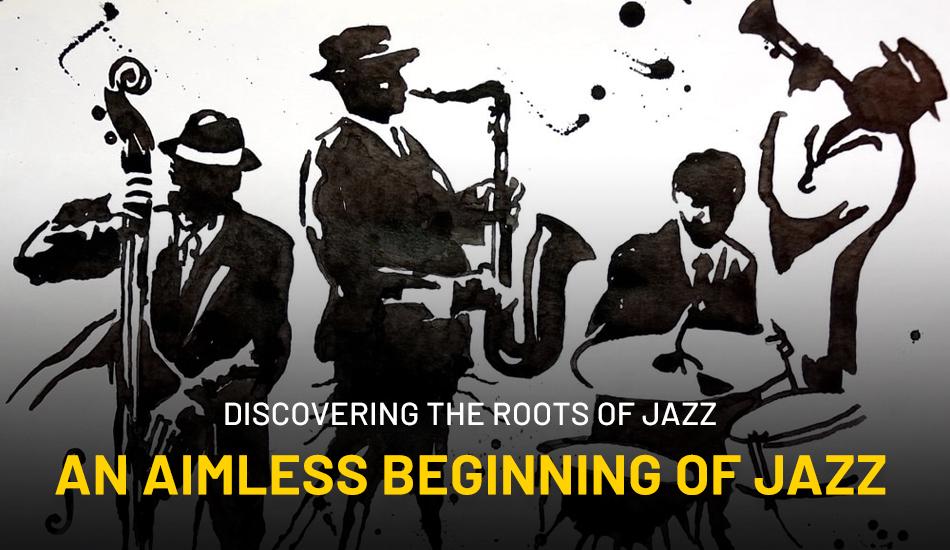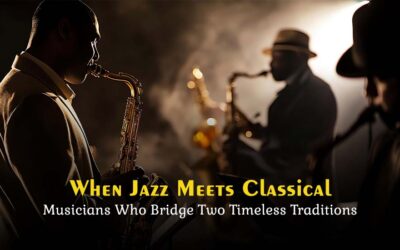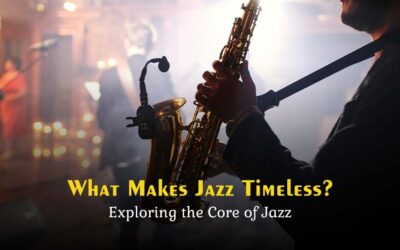Jazz, which has produced hundreds of evergreen hits in the last hundred years, is a testament to the life-giving nature of this music genre. And it doesn’t stop here. Jazz is a spicy cocktail that contains many distinct elements, such as swinging standards and scorching bebop.
In this article, we are going to zero in on the best jazz songs that are passionately recorded and that epitomizes the vibrant jazz genre’s diversity. If you’re a jazz fan or it’s just a beginner’s stage for you, these tracks require you to play them at least once in your life. So there you go, Take some time off, put your feet up, and experience the wonderful melodies.
The Origins of Jazz
Before diving into specific songs, it helps to understand the roots of jazz. One of the earliest styles that emerged was “hot jazz” in New Orleans around the turn of the 20th century. Hot jazz blended ragtime rhythms, blues instrumentation, and the improvisational flair of New Orleans brass bands.
Improvisation became a core element of hot jazz. Musicians would create spontaneous melodies and engage in musical conversations that made each performance unique. This improvisational foundation allowed jazz to evolve into new styles like swing, bebop, and cool jazz.
Classic Hot Jazz Instruments
The energetic sound of hot jazz arose from the creative combination of brass, reed, and rhythm instruments. Each one fulfilled a unique role within the jazz ensemble:
- Trumpet – The trumpet acted as the lead voice in hot jazz, handling the main melodies. Its clear, bright tone could pierce through the band with ease. Louis Armstrong took the trumpet to new improvisational heights with his solos. His rapid-fire lines and expressive timbre established the instrument’s improv potential.
- Clarinet – The clarinet handled the vital job of ornamenting the trumpet melody and basslines. Clarinetists wove nimble countermelodies around the other parts, adding harmonic depth. Benny Goodman displayed the clarinet’s versatile agility with his smooth legato phrasing and large interval leaps.
- Trombone – Expanding the tonal colors was the trombone, with its distinctive slide articulations. From mellow lows to buoyant highs, the trombone’s full tones enriched the ensemble sound. Jack Teagarden brought unrivaled emotion and character to his trombone improvisations, which influenced countless jazz players.
- Tuba – Providing the rhythmic and harmonic foundation was the mighty tuba. With its deep, resonant voice, the tuba produced a steady, swinging bassline. It gave the band a sturdy, rhythmic anchor. The tuba offered a bass sound that was more cunning than the string bass.
- Banjo & Drums – The key rhythm section duties were the banjo and drums. The propulsive syncopated strumming of the banjo generated rhythmic momentum alongside the drummer’s driving beat. This energetic rhythm team powered the band.
Best Jazz Songs: Essentials
The hot jazz era produced a lot of amazing songs that expressed the whole essence of early jazz. Undefined
- “West End Blues” – Louis Armstrong (1928) – This was his masterpiece, this track renders his strong trumpet skills. The introduction cadenza is nothing short of fantastic venturesome melodies that come out as if on the top of the head. The tale is artistically played by his trumpet, and his voice is dramatically charged.
- “Black Bottom Stomp” – Jelly Roll Morton (1926) – Morton’s piano rhythms which were exciting and spread like wildfire were jumping out of the ensemble lines through this interesting tune. Rotation happens, and the soloing complements each other in a marvelous way through both prepared sections and the burning personal displays.
- Potato Head Blues” – Louis Armstrong (1927) – Louis Armstrong’s joyful and witty characters are reflected in the song; the feeling of the trumpet growling and the glee of scat singing are embodied there. The trumpet solo begins the tension build, and later on, the lead vocal comes in. This is where he sings happily, “Look at me, little mommy’s baby loves shortnin bread.”
- “DipperMouth Blues” – King Oliver’s Creole Jazz Band (1923) – the trumpet and clarinet engage in call-and-response phrases while Lil Hardin stays on the keyboard to maintain the rhythm. The artists do great with improvisation and jazz from the music style of New Orleans and build within the 12-bar form.
Incorporating Hot Jazz in Modern Productions
Though hot jazz originated decades ago, contemporary artists can integrate its elements to channel the vintage jazz spirit:
- Instrumentation – Include the key brass instruments such as the trumpet, trombone, and tuba to recall the signature hot jazz band line-up. Their punchy and blaring timbres are characteristic of the early jazz-age sounds. Use acoustic drums instead of electronic drum machines.
- Improvisation – Take into account the solo performances from the instruments and vocalists. Showcase a lively spur-of-the-moment vibe of hot jazz band improvisations.
- Rhythms – Mix syncopated rhythms, backbeats and two-beat figures to create a groove. This simple effect makes it swing and propel. Crucial for the mood-setting are the walking bass lines, the banjo strumming patterns, and the drum grooves that drive the beat.
- Production – Retro mics like ribbons and tubes would help in capturing period-specific sound. That‘s why older mics tend to give a natural tone and warmth. Delve into the hot jazz classics to understand the details of that era’s recordings. Seek to stay within the lines of what came before while adding a personal touch.
Advantages of Hot Jazz Elements
- Vintage Flair – The instrumentation and playing styles of hot jazz instantly evoke the early 1900s. It adds retro charm and historical character.
- Improvisational Freedom – The emphasis on improvisation inherent in hot jazz encourages creativity. Musicians can stretch out and take chances.
- Rhythmic Vitality – The swinging grooves of hot jazz give music forward propulsion and energy. Syncopations create an infectious sense of movement.
- Distinctive Tone Colors – The brass and reed tones typical of hot jazz deliver a bold, brassy palette. This provides a uniquely identifiable vibe.
- Ensemble Interplay – Having multiple horns trade lines and harmonize heightens the conversational musicality.
Disadvantages of Hot Jazz Elements
- Niche Appeal – For mainstream audiences unfamiliar with jazz history, heavy use of hot jazz elements could sound outdated. It needs to be blended tastefully.
- Improvisation Challenges – Extensive improvisation requires top-notch jazz soloists. Not all musicians have the skills and experience to excel here.
- Difficult Arrangements – Authentic hot jazz arrangements with contrapuntal horn lines take effort to write and perform. Complexity could be limiting.
- Restrictive Style – Overemphasizing hot jazz could pigeonhole an artist into a throwback niche at the expense of their individuality.
- Recording Challenges – Capturing a period-accurate hot jazz sound requires specialized mics and preamps. Increased production demands.
Conclusion
The earliest jazz from New Orleans in the early 1900s was red-hot, formed of a brassy fire, swinging reeds and uncontrollable rhythm. Songs with revolutionary titles such as “West End Blues” and “DipperMouth Blues” represented the exultation and joviality of early jazz. Some of the greatest jazz pieces and the best jazz songs and jazz music songs ever made have been produced in this genre.
Although the style kept evolving, its essence remained. Modern artists can keep the spirit of ‘hot jazz’ through the use of period instruments and improvisation by channelling the legacy of ‘hot jazz’ in a new way. The core attitude remains: determined, rebellious, and merrily unchained.
Along with shifting fashion, jazz remains unaffected by the spark of its founding. The flame of the music’s creative fire will never be lost, as it is being passed on from Armstrong and Morton to the new generation of musicians. Jazz will never cool off if performers continue to take chances and create new ways forward.
Then the flames will move with us! The creator of hot jazz pleasures never ends. Nevertheless, the flame continues to burn, prompting new musicians and keeping their audience engaged and excited for decades. Conversely, wherever jaw-dropping improvisation and untamed grooves sound, hot jazz’s embers will keep burning as well.




